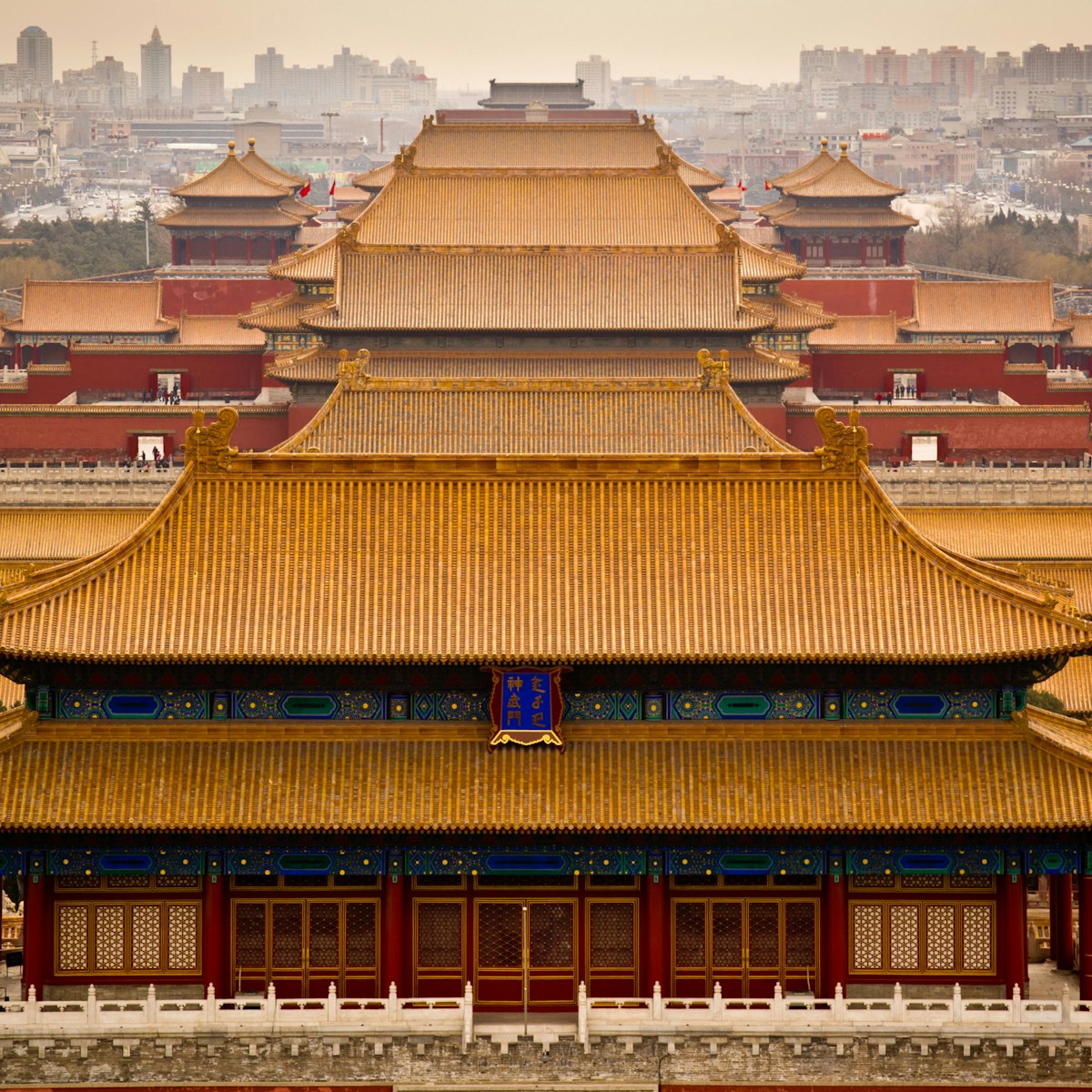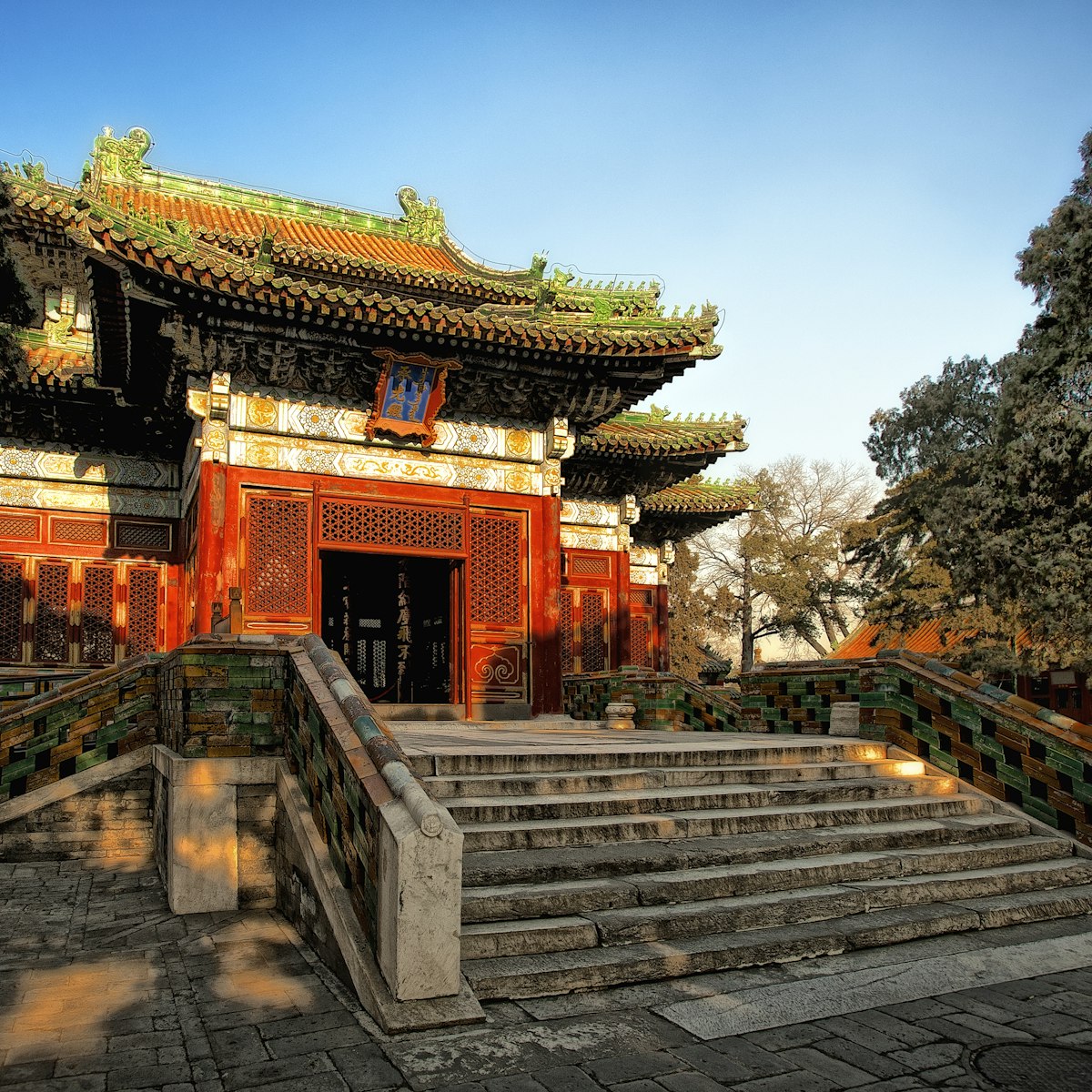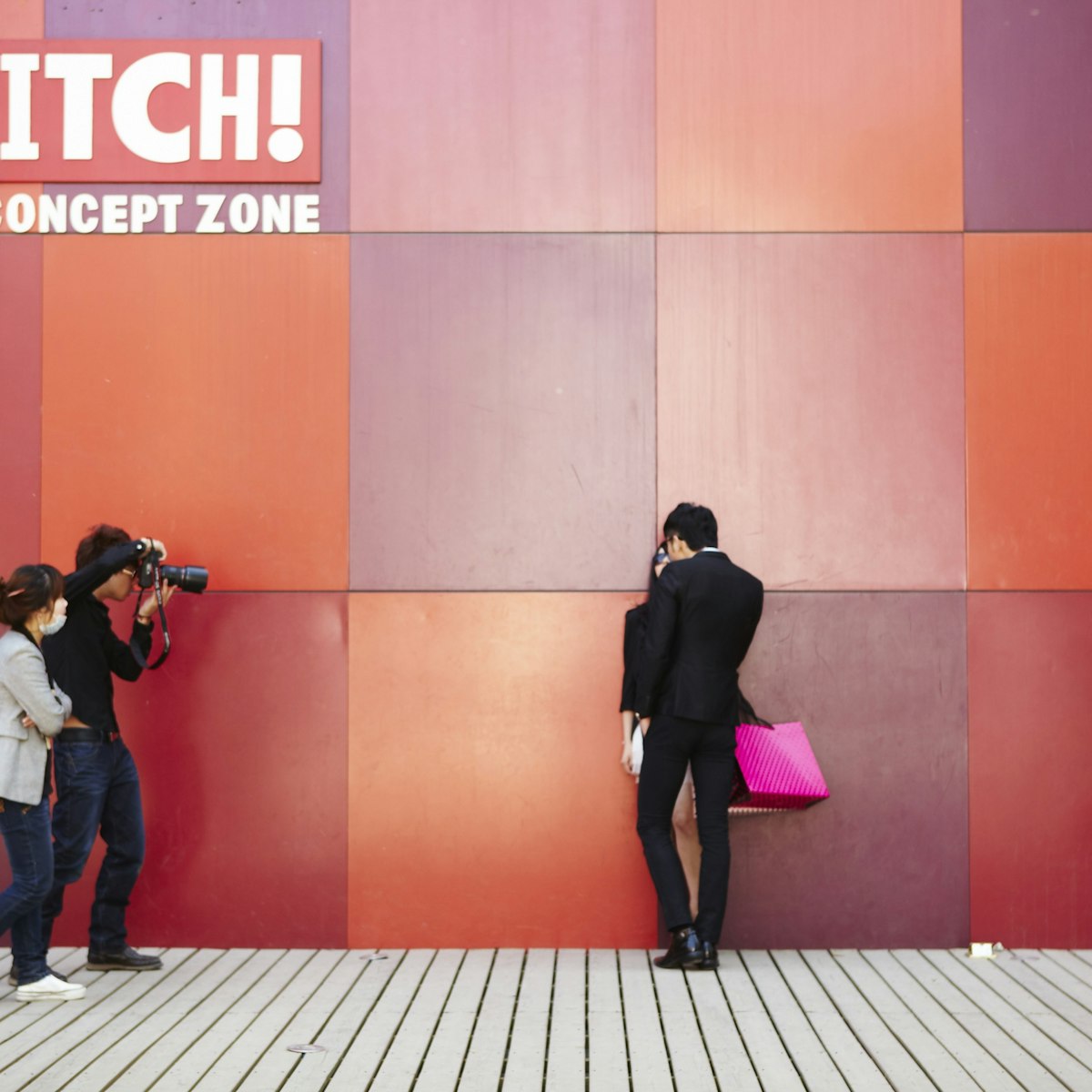Feed your inner florist with a jaunt to the Botanical Gardens, established in 1956 on land that was once part of a swath of royal real estate set against the backdrop of the Western Hills. The flower areas (lilies, roses, peonies etc) are seasonal, but the rainforest-style greenhouse (¥50, 8.30am to 4.30pm) is year-round. There's also the worthwhile Sleeping Buddha Temple to check out.
Puyi, China's last emperor, tended the gardens here between 1960 and 1961 after 10 years of political re-education under the communists. There were plans to turn his former living quarters – now an unmarked storage room – into a museum, but it hasn't happened.
In the garden's upper reaches, Sleeping Buddha Temple houses a reclining effigy of Sakyamuni, not sleeping but rather on the cusp of death and transcendence. To the side are arrayed pairs of gargantuan shoes, gifts to the Buddha from various emperors. Further up the hill, Cherry Valley was the sight of three more temples, marked with signs noting 'temple ruins', though there's nothing much to see.
In the east of the gardens is the Cao Xueqin Memorial, where the author resided in his later years. Cao (1715–63) wrote China's greatest novel, Dream of the Red Chamber, a sprawling saga about a noble Qing family's fall from grace. The little China Honey Bee Museum isn't worth a diversion unless you want to buy a jar of the famous locally made honey.
A visit here pairs conveniently with the Summer Palace and Fragrant Hills, both with stops along the Xijiao light-rail line that connects with Beijing's subway system.







